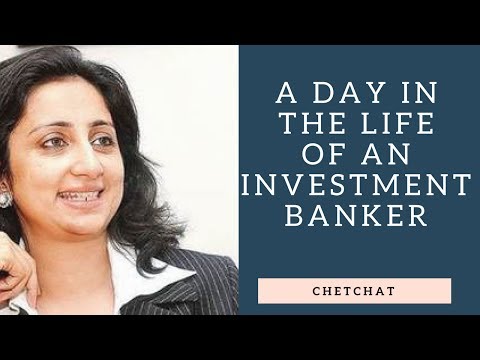
So having covered where to place your stop loss, let’s now move on to exit methods for mean reversion strategies. The Limit or Market Order is a primary order used to short sell. Exit points are best entered immediately after the primary trade is placed. Gordon Scott has been an active investor and technical analyst or 20+ years.

Stop-loss and take-profit are two essential risk management strategies you should consider, especially in your short-term trading plans. A stop-loss is designed to cap the loss you can incur from a trading position. The trigger price is always lower than your entry price if you’re in a long position and it is higher than your entry in a short position. On the other hand, a take-profit order is meant to capitalize on short-term profits on open trades.
Setting a stop-loss prevents you from making emotional decisions that may adversely affect your position. Without a stop-loss level, fear may control you to exit your trade prematurely. On the other hand, you may also overstay in a losing streak, hoping the market will reverse soon. For instance, if you create a long position, you plan that the price will increase.
Market Maker Brokers
Traders with a long-term strategy do not favor such orders because it cuts into their profits. Now, those who go for this approach often stress the importance of not placing the stop exactly at the support or resistance level. The reason is that support and resistance act more like zones than exact levels. Why, you may ask, would you want to set a take-profit or exit point, where you sell when your stock is performing well?
What are Signals in Crypto Trading? – Bitcoinsensus
What are Signals in Crypto Trading?.
Posted: Fri, 08 Sep 2023 16:47:33 GMT [source]
A trailing stop is a type of stop-loss that secures profits as long as the market moves in the trade’s direction, and automatically closes the trade if the market moves against it. It is set at a certain distance from market price, measured as a percentage or number of pips. It follows the market price until it moves against your Positions. Take profit and stop loss (TP/SL) is a trading strategy that allows you “take profit” or “stop loss” at a predefined price.
Equities Trading Brokers
The key advantage is that these orders together limit total risk when placing a trade. A ‘stop-loss’ order – officially known as a ‘stop closing order’ – is an order used by traders to limit loss or lock in the remaining profit on an existing position. Forex (foreign exchange) is a financial giant, reigning as the largest market globally!
IG International Limited is licensed to conduct investment business and digital asset business by the Bermuda Monetary Authority. However, take-profit and stop-loss orders aren’t appropriate for every circumstance. For example, you wouldn’t want to go this route for very long-term investments or when trading exceptionally volatile instruments. The purpose of this website is solely to display information regarding the products and services available on the Crypto.com App. It is not intended to offer access to any of such products and services.
When comparing Take Profit vs Stop Loss, Stop Loss is more important. Order placements and size should be dictated by trading setups and not on your needs. You cannot force the market three outside down bearish to produce trading opportunities for you or the kind of opportunities you wish to trade. Every trader’s main goal should be to trade the right way, and money will follow.
Dual Momentum Trading Strategy (Gary Antonacci)
If you expect a trade instrument’s price to fall, then you open a Down trade and close it when the price drops to a level that is lower than the level you opened a trade at. You can establish the stop-loss and take-profit levels based on the market sentiments. For example, you can place a stop-loss on your portfolio following a major crypto event, like the recent FTX collapse. This article discusses stop-loss and take-profit, types of stop-losses, why stop-loss and take-profit levels are essential, and how to set a stop-loss and take-profit.
A reasonable stop loss size is no more than a few percent of your total account balance. A common figure is 2-3% at most, and we would agree that it’s a good guideline to follow. In the image below we see an example of a trailing stop that enabled us to follow the trend for quite sometime before it finally turned around, and crosses below the moving average. Considering the traits of the trend following approach, we might want to use some type of exit method that trails the price.
Forex Trading Apps
Ultimately, it leads to potentially higher losses on your trades that you’d prefer to accept. A take-profit order is ideal for investors focusing on short-term gains. If the price of an asset appreciates as projected, a take-profit order will help you to secure your profits by exiting the market when the trigger price is reached. When you set the stop-loss appropriately, if the market trends against your trading plan, you will only lose what you are willing to lose since you are the one who set the level. It also ensures you lose what you can afford to lose, mainly when trading with leverage, like in margin trading.

However, one common number that’s used fairly frequently is three. In other words, you should take the average true range reading, multiply it by three, and then subtract the number you get from the entry price, provided that you’re going long. One of the most important decisions you can make to reduce your risk as a trader is to use a stop loss. By using a stop loss, you reduce the chances of finding yourself in a situation where losses quickly amass and make it impossible to continue your trading business. However, something that’s equally important is to determine how and when to take profit.
The stock subsequently falls by 5%, triggering the stop-loss, so the stock is sold at the best available price. If the trader had instead shorted the stock, the position would close through an offsetting purchase when the asset began to trade at the set price. Setting a modest T/P (short for a take profit) will allow you to trade with more security. As a result, you might be able to allow more flexibility with your T/P, making sense in a more volatile market.
- Those who want less risk tend to set tighter stops, and those who assume more risk give more generous downward room.
- Remember that both stop loss and take profit orders will remain adjustable while your trade is active.
- If you do it manually, you’ll have to dedicate unspecified amounts of time to watching the price movement on every instrument.
- However, setting both levels when deciding a trade is much preferable.
The reason for this is that it is placed at a short distance from the level where the position was opened and prevents the price from realizing its whole potential of movement. To use protective orders correctly, the trader should study their strategy well and make up their mind about the risks in the trade before they start working. Trying to close https://1investing.in/ the losing position manually, they start feeling pity for the trade and hoping that the market will reverse in the desired direction. Meanwhile, a correctly placed Stop Loss helps to limit losses by the level affordable according to the MM. For the next example, let us take the simplest strategy based on two Moving Averages (MA) and Fractals.
Another approach that’s sometimes used by discretionary traders, is to identify strong support and resistance levels in the market and place the stop loss around those levels. Money management is one of the most important (and least understood) aspects of trading. Many traders, for instance, enter a trade without any kind of exit strategy and are often more likely to take premature profits or, worse, run losses.
How Do You Decide Where To Take Profit?
Establishing a stop-loss order is one of the most important things to do when trading Forex. Stop orders must be specified in the algorithm of every professional trading strategy. Without this, you cannot call an existing trading strategy complete. The trader defines how much they can lose, according to the MM, if something goes wrong. A novice Forex trader would put the stop loss under #1 on the chart. And, as you can see, you would have been stopped out at #3 when the market spiked below the last low.
To reduce those risks, you can leave the monitoring and closing of your trades to the Olymp Trade platform’s Auto-closing on the Forex mode. On the sidebar to the right from the price chart of a chosen trade instrument, you can press Up or Down to open a trade in the direction you want. You can apply several types of stop-losses in different market conditions. They include Sell Stop-Loss, Stop-Limit, and Trailing Stop-Loss. For example, assuming you own 1 BTC and set your stop-loss at 5%. If the market goes against your projection, you will only incur a loss of 5%.
